Posts Tagged: hummingbirds
What You May Not Know About Hummingbirds
Pollinators aren't just bees, butterflies, beetles and bats. They're also birds, like hummingbirds. Ornithologists tell us that hummingbirds can...
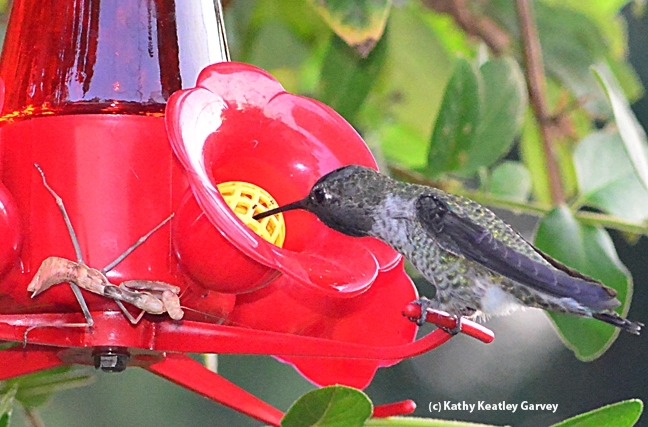
Hummingbirds eat insects and insects eat hummingbirds. Here a praying mantis lurks by a hummingbird feeder. It was quickly removed to another spot. (Photo by Kathy Keatley Garvey)
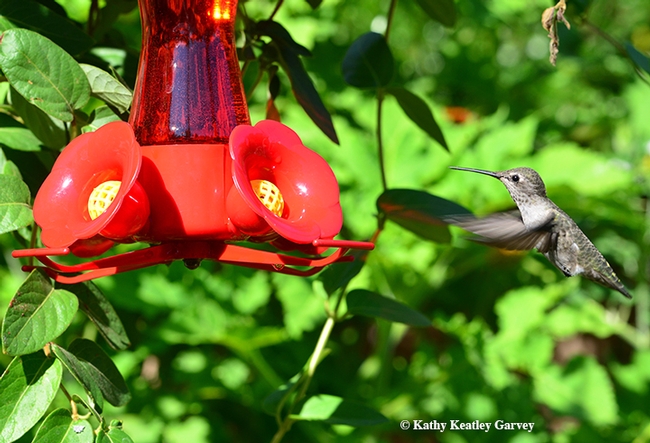
A hummingbird flies in for a quick burst of energy. It is best not to use red dye in a feeder; some companies make hummingbird feeders with red glass. (Photo by Kathy Keatley Garvey)
UC Davis Community Ecologist Rachel Vannette: Hellman Fellowship to Research Pollinator Microbiomes
Congratulations to community ecologist Rachel Vannette, assistant professor in the UC Davis Department of Entomology and Nematology: she was just...
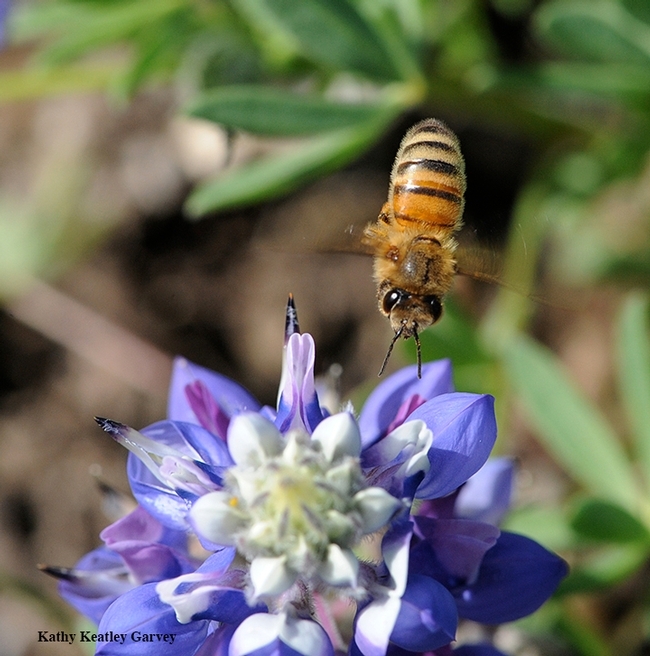
A honey bee heads for a lupine blossom. Nectar-living microbes release scents or volatile compounds, too, and can influence a pollinator’s foraging preference, according to UC Davis community ecologist Rachel Vannette, recipient of a Hellman Fellowship. (Photo by Kathy Keatley Garvey)
Watch Out!
The hummingbirds seemed apprehensive. They'd fly to the feeder, stop in mid-air, and turn back. What was keeping them from the feeder? A closer...

A praying mantis is sprawled out on a hummingbird feeder, as a hummer takes a drink. (Photo by Kathy Keatley Garvey)

The praying mantis moves to another spot. (Photo by Kathy Keatley Garvey)
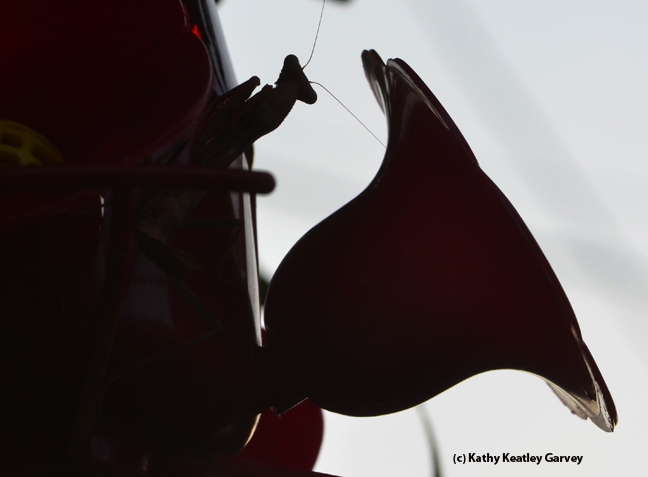
Silhouette of the praying mantis lying in wait. (Photo by Kathy Keatley Garvey)
A Yellow Gem
I found this little gem by its lonesome on a shelf in the corner of an itty bitty hardware store mixed amongst some fuchsia and coleus. It immediately caught my eye with its upright stature and brilliantly colored flower. I’d seen similar plants in different colors elsewhere and knew them as Justicia brandegeana. The store owner told me it was called Shrimp Plant. I had also seen them more costly, so I quickly snapped it up without a second look and was happy to be taking mine to its new home.
As I ceremoniously carried him to his new home I noticed the tag with the care instructions, and then I noticed the scientific name…Pachystachys lutea. It certainly looked very similar. They are both in the same plant family Acanthaceae. The confusion came in because both are called Shrimp Plant. Because of the way the bracts are aligned and the actual flowers protrude, it makes it appear as a shrimp, hence the common name, Shrimp Plant, even more so if you come across a salmon colored variety of the brandegeana.
My new friend, the Pachystachys actually is native to Peru which makes them well tolerable of the heat; however they are actually shade plants. It would be great to see several of these blooming in some of the dark corners of my yard. Right now it is doing well in its original pot in the bright light of the fall sun but in the shade of my backyard awning. They can grow up to 5 feet tall in optimal conditions (the shrimp) can eventually get up to 7 inches. They can be propagated by stem cuttings and will keep their bushy habit with regular trimming. It usually blooms from spring through fall however can bloom all year if kept indoors in the cold seasons.
It does like to be watered every other day and when I’ve let it go more and it begins to droop, a good soaking and he’s standing upright within a few hours. They definitely attract hummingbirds as I’ve been “hummed” by an impatient one or two while I’ve been tending to it and the surrounding area. In the winter I plan to bring my Shrimp Plant indoors to avoid the cold and let it dwell happily as a houseplant and return him to the outdoors in the warmer weather.

Pachystachys lutea. (photos by Patricia Brantley)

Pachystachys lutea up close.
Summertime
It’s such a pleasure spending time in the garden, especially this time of year. Even with our erratic weather, we have color and life everywhere. The garden is abundant with vegetables and flowers. We have been busy the past 2 months harvesting cherries, followed by peaches. A couple of days ago, I pulled the yellow onions, cleaned and trimmed them for storage. The ‘Big Boy’ and ‘Juliet’ tomatoes are providing us with tomato sandwiches and salads. The zucchini is trying it’s best to hide from our searching eyes. The last one was about a foot long (oops). Eating outdoors just about daily is the best summertime treat and a relaxing way to catch up on our daily activities. Listening to the splashing of our water features, watching the bees and hummingbirds-zipping back and forth. What a treat. The dahlias are blooming in several corners of the yard and these blooms have been cut and placed in a vase gracing our kitchen island. The begonias, in pots and hanging baskets are glorious. As busy as we are each day, enjoying the fruits of our labor, is the best feeling. There is no better time than “the good ole summertime” and right now we’re enjoying every minute of it before it’s over.

Pink dahlia. (photo by Sharon Rico)
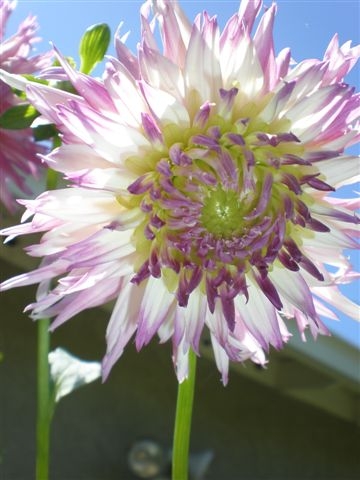
Lavender and white dahlia.

Big beautiful begonia.

